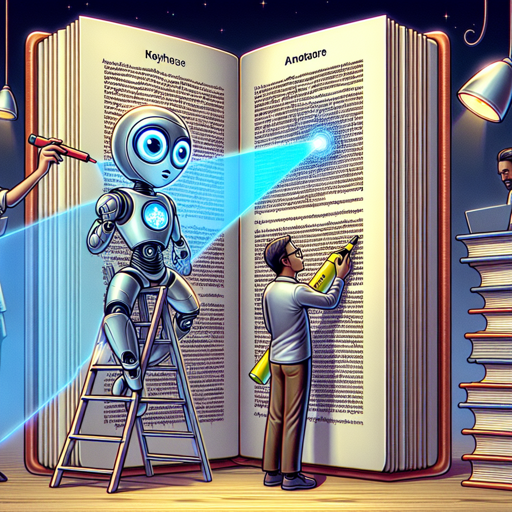Keyphrase extraction is a powerful technique in text analysis that allows us to highlight essential phrases within a document. Imagine you’re trying to find the book’s summary without reading the entire thing; keyphrase extraction serves that exact purpose, enabling quick understanding of the content. This article outlines how to extract keyphrases efficiently using modern AI techniques, particularly through pre-trained models and practical coding methods.
The Concept of Keyphrase Extraction
Previously, the task of keyphrase extraction was performed manually by human annotators who would carefully read a document and identify important phrases. This, while thorough, is time-consuming when dealing with a large number of documents. Now, thanks to advancements in Artificial Intelligence, we can automate this process.
Classical machine learning methods consider statistics and word occurrences, whereas deep learning models grasp the semantic meaning of a text and its contextual relationships. It’s like comparing a child who memorizes a map versus one who understands the geography of the area; the latter navigates much more effectively.
Model Overview
In this guide, we will focus on the Keyphrase Boundary Infilling with Replacement (KBIR) model, which has been fine-tuned on the Inspec dataset. This model is specifically designed for extracting keyphrases from scientific papers and uses a multi-task learning setup for optimization.
Setting Up Your Environment
-
- Make sure you have the Transformers library installed. You can install it using:
pip install transformersHow to Use the Keyphrase Extraction Model
Step 1: Importing Required Libraries
Start by importing the necessary libraries to set up your keyphrase extraction pipeline:
from transformers import (
TokenClassificationPipeline,
AutoModelForTokenClassification,
AutoTokenizer,
)Step 2: Define the Keyphrase Extraction Pipeline
We will create a custom pipeline for keyphrase extraction:
class KeyphraseExtractionPipeline(TokenClassificationPipeline):
def __init__(self, model, *args, **kwargs):
super().__init__(
model=AutoModelForTokenClassification.from_pretrained(model),
tokenizer=AutoTokenizer.from_pretrained(model),
*args,
**kwargs
)
def postprocess(self, all_outputs):
results = super().postprocess(
all_outputs=all_outputs,
aggregation_strategy=AggregationStrategy.SIMPLE,
)
return np.unique([result.get("word").strip() for result in results])Step 3: Load the Model
Load the pre-trained model and prepare the extractor:
model_name = "ml6team/keyphrase-extraction-kbir-inspec"
extractor = KeyphraseExtractionPipeline(model=model_name)Step 4: Perform Extraction
Provide a sample text and let the extractor do its magic:
text = """Keyphrase extraction is a technique in text analysis... (Your full text goes here)"""
keyphrases = extractor(text)
print(keyphrases)Understanding the Output
The output will display the keyphrases extracted from your input text. For instance, keyphrases like ‘Artificial Intelligence’ and ‘deep learning’ reflect the core content of your document.
Troubleshooting Keyphrase Extraction
If you encounter issues while running the model or obtaining results, consider the following troubleshooting tips:
- Ensure that your input text is well-structured without excessive noise or irrelevant information.
- Make sure the model name is correctly specified. You can check available models on platforms like Hugging Face.
- If performance isn’t up to expectations, remember that the model is tuned for specific datasets and may perform variably on general text.
- Check your Python environment; library versions can sometimes lead to unexpected behavior.
For more insights, updates, or to collaborate on AI development projects, stay connected with fxis.ai.
Final Thoughts
In a world overflowing with information, keyphrase extraction models equipped with deep learning capabilities usher in a new era of efficiency and understanding. At fxis.ai, we believe that such advancements are crucial for the future of AI, as they enable more comprehensive and effective solutions. Our team is continually exploring new methodologies to push the envelope in artificial intelligence, ensuring that our clients benefit from the latest technological innovations.

